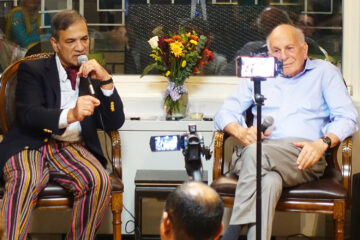Dan Levitt in Time:
 Our cells, each composed of 100 trillion atoms made of particles from the Big Bang, are filled with all kinds of structures. These include organelles—little factories like energy-producing mitochondria—and tiny molecular machines like ATP synthase, whose rotor and shaft spin at up to 300 rpm to produce ATP, the molecules that transmit energy in our cells. The interior of our cells are also filled with all kinds of molecules randomly colliding at tremendous speeds. Water molecules, for example, zigzag at the astonishing speed of over 1 thousand miles an hour (although they only go about 4 billionths of an inch before they smack into another molecule). In addition to collisions, cells face a myriad of other threats from within and without. You might expect them to suffer the same fate as our cars and dishwashers and constantly break down. But they don’t. Your body has an ingenious three-part strategy to keep you out of the junkyard.
Our cells, each composed of 100 trillion atoms made of particles from the Big Bang, are filled with all kinds of structures. These include organelles—little factories like energy-producing mitochondria—and tiny molecular machines like ATP synthase, whose rotor and shaft spin at up to 300 rpm to produce ATP, the molecules that transmit energy in our cells. The interior of our cells are also filled with all kinds of molecules randomly colliding at tremendous speeds. Water molecules, for example, zigzag at the astonishing speed of over 1 thousand miles an hour (although they only go about 4 billionths of an inch before they smack into another molecule). In addition to collisions, cells face a myriad of other threats from within and without. You might expect them to suffer the same fate as our cars and dishwashers and constantly break down. But they don’t. Your body has an ingenious three-part strategy to keep you out of the junkyard.
The biophysicist Dan Kirschner told me that just thinking about everything that could go wrong in cells used to keep him awake at night. He was learning about cell development in a graduate school course just as his wife was about to have a baby. He was so overwhelmed by the many opportunities for mistakes that he feared his daughter would be born with a neck like a giraffe.
More here.


 In my second year of college I applied for a spot in a creative writing program. If I got in, I could graduate in two years with a writing major. If I didn’t, well, I needed a new major. I fussed over the application for months. Attended info sessions, met with the program director, revised my portfolio of poems so often that one professor finally said, Bryan, relax. Let the poems speak. I didn’t grow up saying I wanted to be a writer, but the signs were there, like a secret wish I kept from everyone, myself included. A stroll through the half-hearted journals and failed diaries of my teenage years turns up observations like: “I want to write books, but you can’t make a living that way.” Such a Midwesterner: The arts just aren’t practical.
In my second year of college I applied for a spot in a creative writing program. If I got in, I could graduate in two years with a writing major. If I didn’t, well, I needed a new major. I fussed over the application for months. Attended info sessions, met with the program director, revised my portfolio of poems so often that one professor finally said, Bryan, relax. Let the poems speak. I didn’t grow up saying I wanted to be a writer, but the signs were there, like a secret wish I kept from everyone, myself included. A stroll through the half-hearted journals and failed diaries of my teenage years turns up observations like: “I want to write books, but you can’t make a living that way.” Such a Midwesterner: The arts just aren’t practical.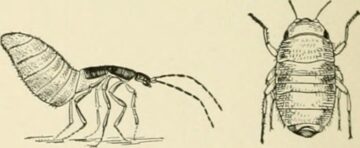 However, a growing collection of new experiments is challenging the old consensus. Far from being six-legged automatons, they can experience feelings akin to pain and suffering, joy and desire. When Chittka gave bumblebees an extra jolt of sucrose, their favorite food, the bees
However, a growing collection of new experiments is challenging the old consensus. Far from being six-legged automatons, they can experience feelings akin to pain and suffering, joy and desire. When Chittka gave bumblebees an extra jolt of sucrose, their favorite food, the bees  Though firmly a Renaissance painter in regard to technical acumen, Grünewald was Medieval in his vision, an inheritor of the 14th and 15th centuries’ comfort with the horrors of embodiment. In Germany, in particular, there existed then a form of devotion that took succor precisely in visualizing the sort of gruesome tableaux that Grünewald expertly painted, especially as regards the paradox of an almighty God himself suffering and dying. “Be assured of this,” wrote Suso’s contemporary, the mystic Thomas à Kempis in
Though firmly a Renaissance painter in regard to technical acumen, Grünewald was Medieval in his vision, an inheritor of the 14th and 15th centuries’ comfort with the horrors of embodiment. In Germany, in particular, there existed then a form of devotion that took succor precisely in visualizing the sort of gruesome tableaux that Grünewald expertly painted, especially as regards the paradox of an almighty God himself suffering and dying. “Be assured of this,” wrote Suso’s contemporary, the mystic Thomas à Kempis in 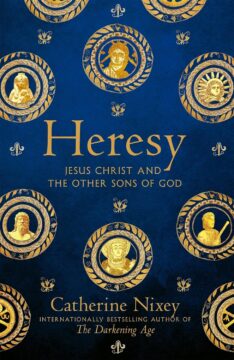 There were “many Jesuses, many Christs – many of them unimaginably strange to us today” – alongside other magi who resembled some of these Christs. Sometimes Jesus had a physical body; at others he was an apparition that left no footprints. There was a Jesus who warned his disciples against “filthy intercourse” and instructed them never to have children. In one account, an angry young Jesus curses a small boy, who becomes withered and deformed; later Jesus curses another boy, who falls down dead. There were Jesuses that hung in agony on the cross, and others who suffered no pain. In addition to diverse Jesuses, there was Apollonius, a first-century Greek philosopher and miracle-worker, sometimes called “the pagan Christ”.
There were “many Jesuses, many Christs – many of them unimaginably strange to us today” – alongside other magi who resembled some of these Christs. Sometimes Jesus had a physical body; at others he was an apparition that left no footprints. There was a Jesus who warned his disciples against “filthy intercourse” and instructed them never to have children. In one account, an angry young Jesus curses a small boy, who becomes withered and deformed; later Jesus curses another boy, who falls down dead. There were Jesuses that hung in agony on the cross, and others who suffered no pain. In addition to diverse Jesuses, there was Apollonius, a first-century Greek philosopher and miracle-worker, sometimes called “the pagan Christ”. Say you’re at a party with nine other people and everyone shakes everyone else’s hand exactly once. How many handshakes take place?
Say you’re at a party with nine other people and everyone shakes everyone else’s hand exactly once. How many handshakes take place?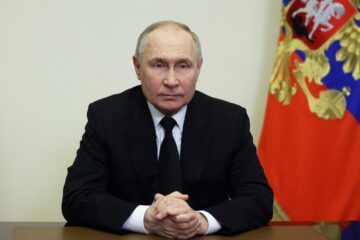 On Friday, March 22, gunmen toting assault rifles stormed Crocus City Hall, west of Moscow in the Krasnogorsk district, shot the guards and, as graphic videos show, opened fire on the concert audience without restraint. More than 6,000 tickets had been sold for the performance by the famed Russian rock band
On Friday, March 22, gunmen toting assault rifles stormed Crocus City Hall, west of Moscow in the Krasnogorsk district, shot the guards and, as graphic videos show, opened fire on the concert audience without restraint. More than 6,000 tickets had been sold for the performance by the famed Russian rock band 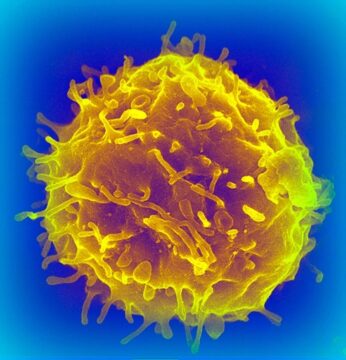 Old mice developed more youthful immune systems after scientists reduced aberrant
Old mice developed more youthful immune systems after scientists reduced aberrant  “I FOUND IT extremely honest, forthright, and moving in ways I had not expected it to be,” Toni Morrison wrote to an aspiring novelist in 1977, “but it is a shuddering book and one that offers no escape for any reader whatsoever.” Still, Morrison, then a senior editor at Random House, liked the manuscript so much that, before responding, she passed it around the office to drum up support. The verdict was “intelligent,” but also “very ‘down,’ depressing, spiritually abrasive.” Whatever the merits of the writing, Morrison’s colleagues predicted, the potent mix of dissatisfaction, anger, and mournfulness would limit the book’s commercial appeal—and Morrison reluctantly agreed. “You don’t want to escape and I don’t want to escape,” her letter concludes, “but perhaps the public does and perhaps we are in the business of helping them do that.”
“I FOUND IT extremely honest, forthright, and moving in ways I had not expected it to be,” Toni Morrison wrote to an aspiring novelist in 1977, “but it is a shuddering book and one that offers no escape for any reader whatsoever.” Still, Morrison, then a senior editor at Random House, liked the manuscript so much that, before responding, she passed it around the office to drum up support. The verdict was “intelligent,” but also “very ‘down,’ depressing, spiritually abrasive.” Whatever the merits of the writing, Morrison’s colleagues predicted, the potent mix of dissatisfaction, anger, and mournfulness would limit the book’s commercial appeal—and Morrison reluctantly agreed. “You don’t want to escape and I don’t want to escape,” her letter concludes, “but perhaps the public does and perhaps we are in the business of helping them do that.”